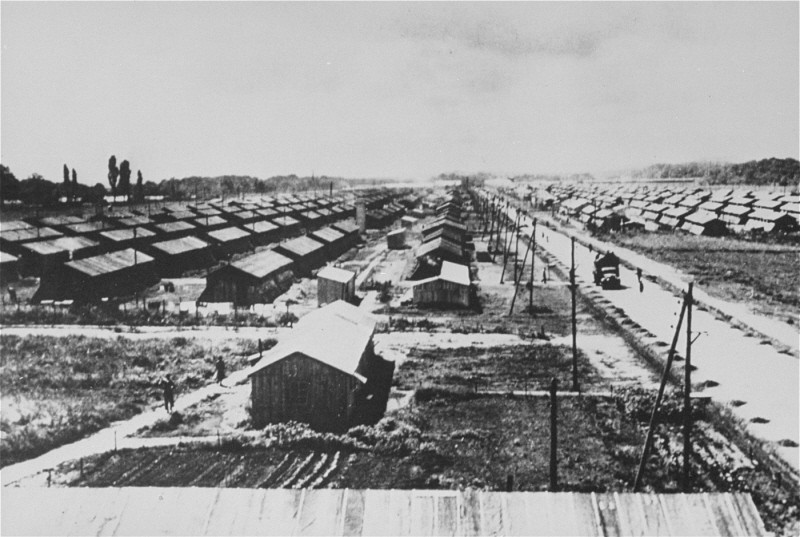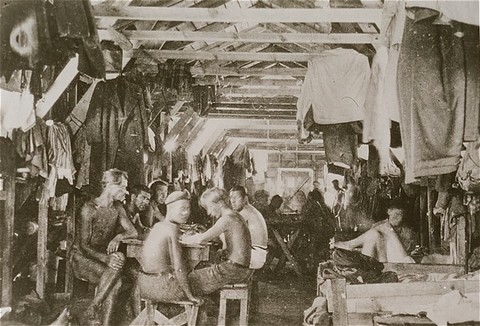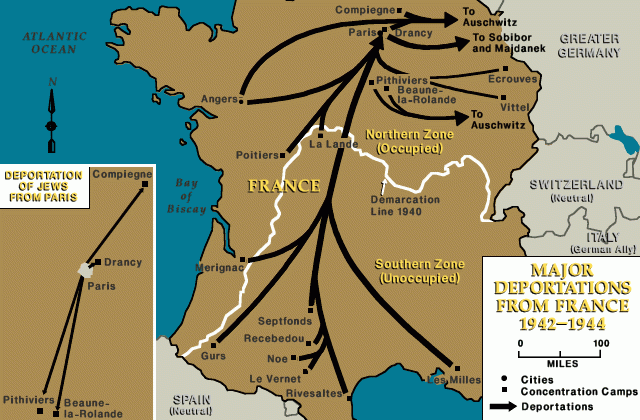
Gurs
The Gurs camp was one of the first and largest camps established in prewar France. It was located at the foot of the Pyrenees in southwestern France, just to the south of the village of Gurs. The camp, about 50 miles from the Spanish border, was situated in the foothills of the Pyrenees Mountains northwest of Oloron-Sainte-Marie.
The French government established the Gurs camp in April 1939, before war with Germany and well before the occupation of France in June 1940. Originally, Gurs served as a detention camp for political refugees and members of the International Brigade fleeing Spain after the Spanish Civil War.
In early 1940, the French government also interned about 4,000 German Jewish refugees as "enemy aliens," along with French leftist political leaders who opposed the war with Germany. After the French armistice with Germany in June 1940, Gurs fell under the authority of the new collaborationist French government, the Vichy regime.

Conditions in the Gurs camp were very primitive. It was overcrowded and there was a constant shortage of water, food, and clothing. During 1940–41, some 800 detainees died of contagious diseases, including typhoid fever and dysentery.
In October 1940, German authorities deported around 6,500 Jews from the Baden region of southwest Germany across the border into the unoccupied zone of France. The Vichy government interned most of them in Gurs. One in four of the deportees died in Gurs or other French camps, 11 percent succeeded in emigrating overseas, 12 percent hid out in France, and 40 percent (around 2,600 deportees) were transported to Auschwitz after July 1942. The fate of the remaining 600 deportees is unknown.

Between August 6, 1942 and March 3, 1943, Vichy officials turned over 3,907 Jewish prisoners from Gurs to the Germans; the Germans sent the majority of them to the Drancy transit camp outside Paris in northern France. From Drancy, they were deported in six convoys to the killing centers in German-occupied Poland, primarily Auschwitz.
Vichy authorities closed the Gurs camp in November 1943. Almost 22,000 prisoners had passed through Gurs, of whom over 18,000 were Jewish. More than 1,100 internees died in the camp. In 1944, Gurs was reopened briefly to intern political prisoners and resistance fighters arrested by Vichy police. After the Allied liberation of France in August 1944, French officials used Gurs to house German prisoners of war and French collaborators. At the end of 1945, officials of the postwar French republic closed the Gurs camp for the last time.
Critical Thinking Questions
- How was Gurs similar to or different from camps on German soil?
- Investigate the relationship between Vichy and Nazi Germany.
- Why did Vichy officials turn over Jews in the camp to the SS?

